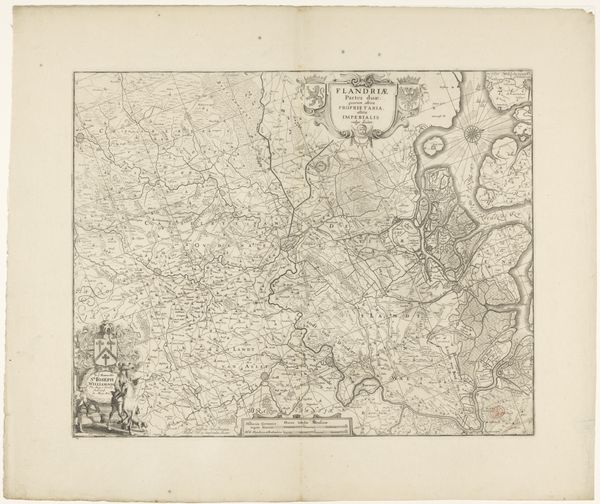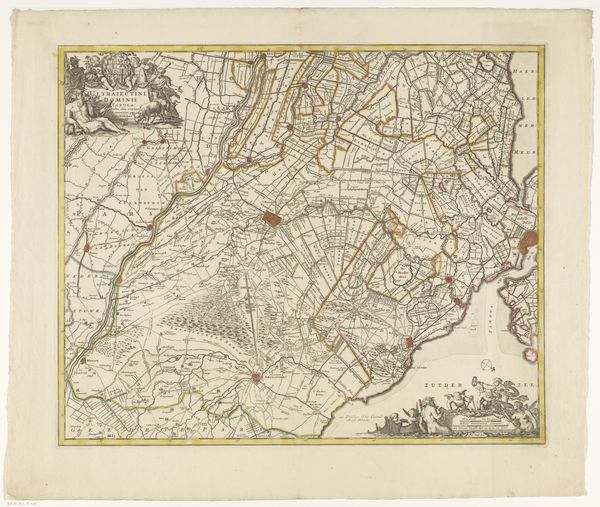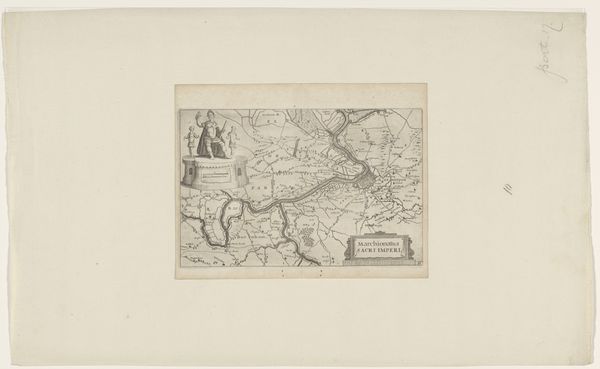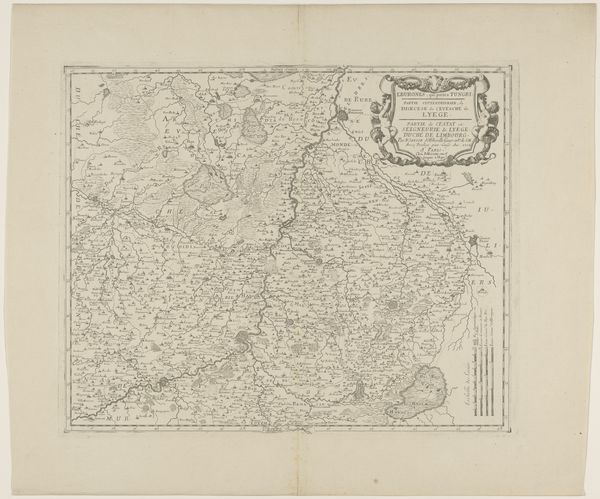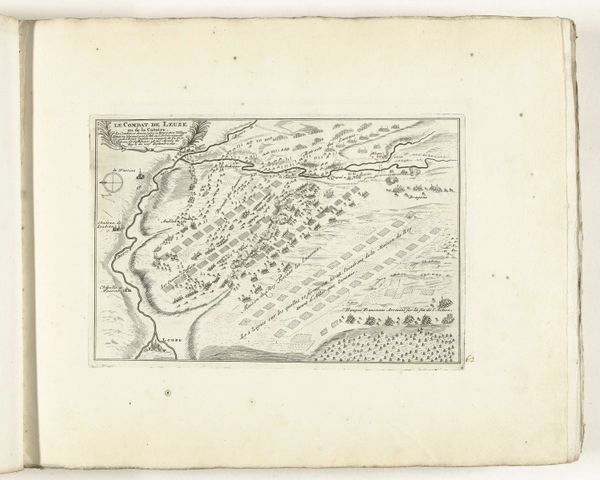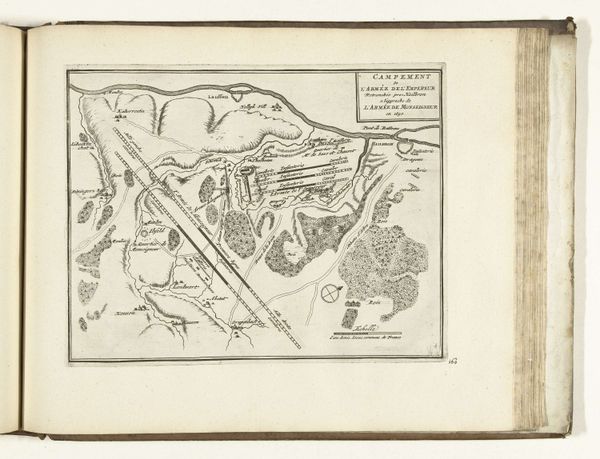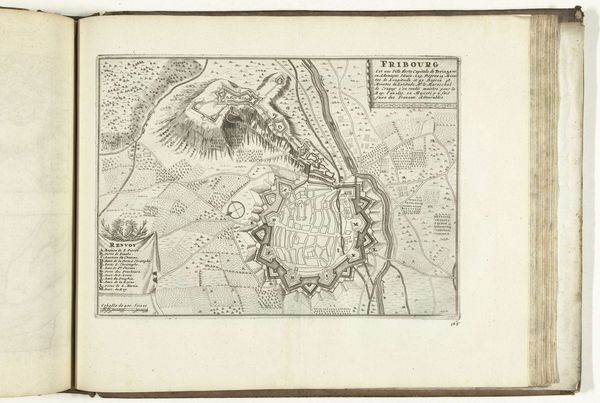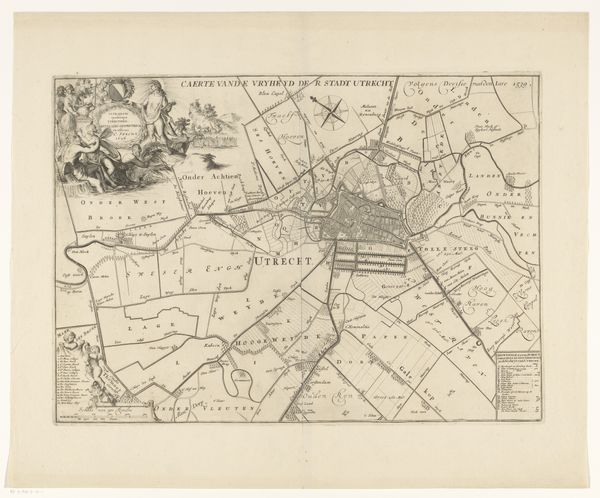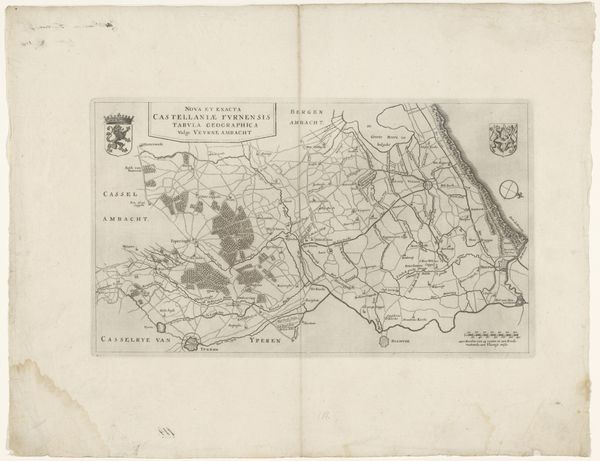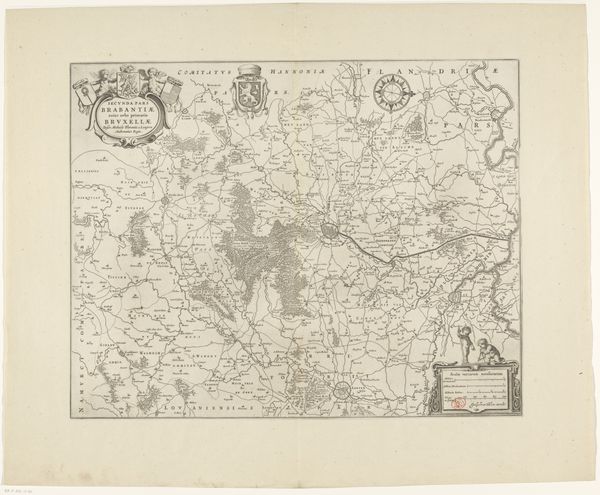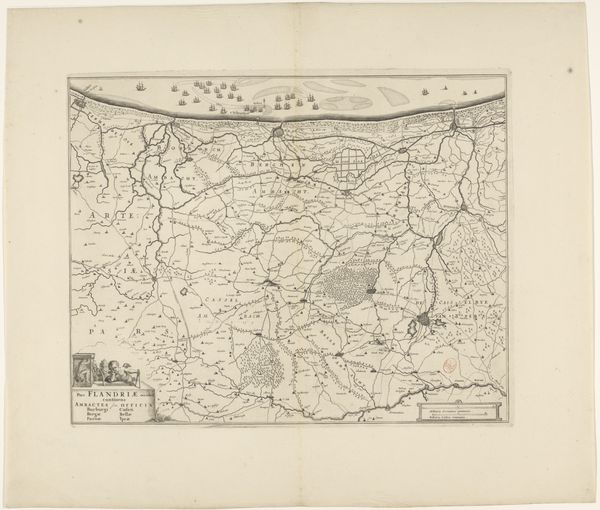
print, engraving
# print
#
cityscape
#
engraving
Dimensions: height 245 mm, width 285 mm
Copyright: Rijks Museum: Open Domain
Curator: Immediately striking! It's the contrast between the organic density of the forested areas and the calculated lines of the roads, almost warring on the surface. Editor: That's a keen observation. What we’re looking at is a print titled "Kaart van de omgeving van Brussel," a map of the Brussels area from 1784. It’s an engraving. The artist is currently listed as anonymous. Curator: Engraving…so much painstaking work removed to transfer geography to a marketable image. I am immediately curious as to the tools they were using; how they made and maintained them, who owned those tools, how long they had to work to generate one image. Editor: Agreed. Consider the political implications of mapping itself during that era. Creating a cityscape wasn't just about geographical accuracy; it was a tool for power, reflecting societal structures. The act of surveying, deciding what to include, was hardly neutral. Who gets represented? Curator: Certainly, it reflects control, specifically ownership over natural resources that translates into a socio-political hierarchy. Look at how prominently the forests are depicted; a resource to be exploited no doubt. Were those involved in forestry considered craftspeople, what would they have made of this? Editor: I see the relationship between representation and control reflected even now. When examining a work like this, what can we deduce about labour conditions in print shops, or the dissemination of these prints? These pieces functioned in broader systems. Who were the consumers, what did these cityscapes mean to them? Curator: Good questions that must be unpacked alongside considering the human cost involved in obtaining the metal sheets used in engraving, and the toxic materials present in the inks, and so much lost. The work tells multiple stories on both sides. Editor: Exactly, it allows for us to delve into social narratives interwoven with commerce, science, and power. By layering art-historical methods with critical theory, it allows a fuller investigation. Curator: I'm left thinking about how so many people were required in the creation and movement of that one print—we only see the image here today. Editor: Absolutely, and viewing art in this context broadens our understanding of its multifaceted importance through the ages.
Comments
No comments
Be the first to comment and join the conversation on the ultimate creative platform.

